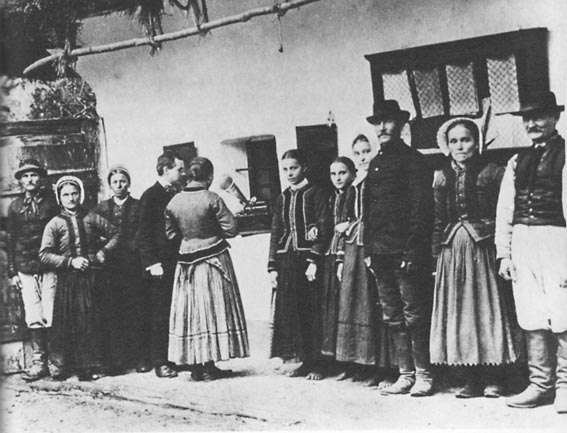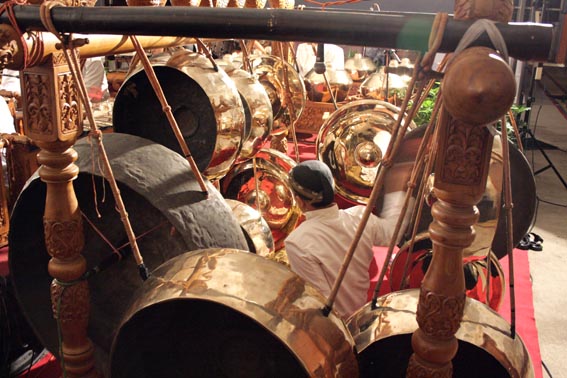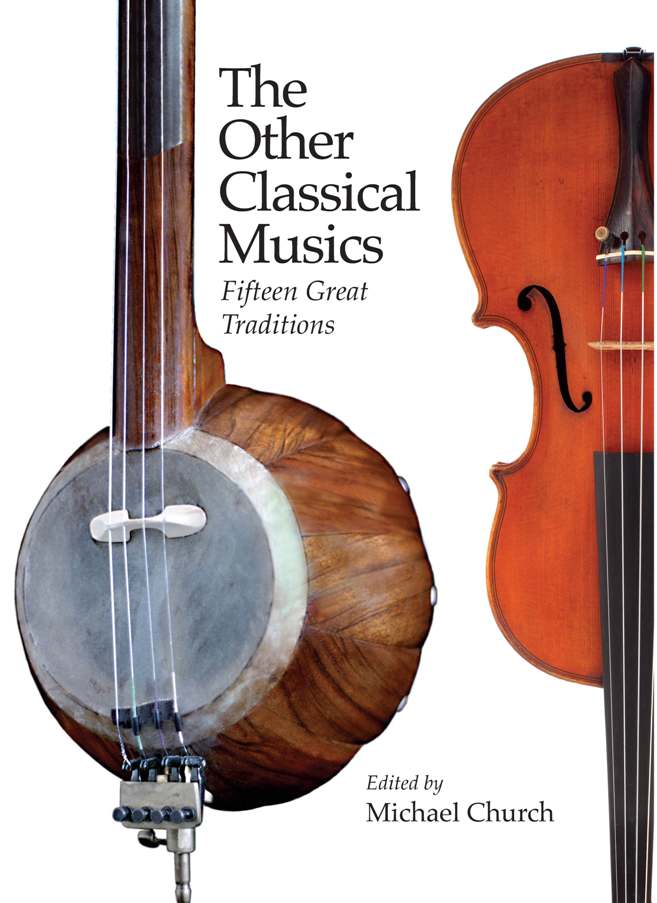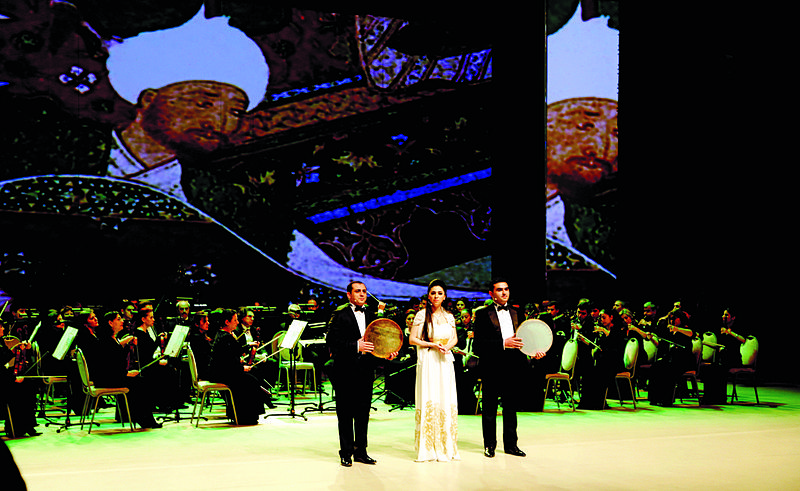Never has the world of music been so open to exploration, nor so rich in paradox. Recording is abolishing history – the music of the past is being subsumed into a voracious and ever-expanding musical present. The shrinking of the globe to a digital village is abolishing geography: everyone can listen to everyone else’s music, wherever they happen to be. But in a piquant irony, just as the short-lived “world music” CD boom was whetting people’s appetite for new sounds, so those sounds were becoming homogenised out of existence, in response to the demands of the global pop market.
The lament for lost musics is nothing new. The German song-collector Ludolf Parisius gave voice to it nearly two centuries ago: “Whoever wishes to collect from the mouth of the people should hurry; folk songs are disappearing one after another.” It was this urge to preserve and celebrate, often intensified by patriotism, which drove ethnomusicology from the start. Writing in 1905, the Austrian comparative musicologist Erich von Hornbostel expressed a vaulting ambition for the quasi-science he had helped to found: “We want to uncover the deepest recesses of the past, and to reveal the full and timeless sweep of the present…We want to encounter everything there is to know about the historical and aesthetic foundations of music.” (Pictured below: Bartók recording folk music).
 Today the existential threat to the world’s musics is compared to the threat hanging over its spoken languages, which are dying out so fast that most of the existing six thousand will have gone by the end of this century. And there is indeed a parallel: a music may not be a language, but it will have a grammar, and like spoken languages – even like plants – it needs its own eco-system to thrive. Moreover, its loss is comparable to the loss of a biological species: as the expression of a particular society, and of a particular way of thinking and feeling, each music is a living organism which, if it withers, may not be capable of resuscitation. What tourist in present-day Ibiza would imagine that within living memory its villages echoed at Christmas with male-voice carols growled in a unique throat-trill style? Visitors to Malta before its culture became Europeanised would have been treated to ghana competitions in bars, with male falsettists vying to deliver impromptu rhymed verses with a killer punch. Local folklorists are now trying to revive this art-form, but the social impulse which motivated it has gone for ever. Two losses, from among thousands.
Today the existential threat to the world’s musics is compared to the threat hanging over its spoken languages, which are dying out so fast that most of the existing six thousand will have gone by the end of this century. And there is indeed a parallel: a music may not be a language, but it will have a grammar, and like spoken languages – even like plants – it needs its own eco-system to thrive. Moreover, its loss is comparable to the loss of a biological species: as the expression of a particular society, and of a particular way of thinking and feeling, each music is a living organism which, if it withers, may not be capable of resuscitation. What tourist in present-day Ibiza would imagine that within living memory its villages echoed at Christmas with male-voice carols growled in a unique throat-trill style? Visitors to Malta before its culture became Europeanised would have been treated to ghana competitions in bars, with male falsettists vying to deliver impromptu rhymed verses with a killer punch. Local folklorists are now trying to revive this art-form, but the social impulse which motivated it has gone for ever. Two losses, from among thousands.
Yet music is also infinitely adaptable. It can fuse, absorb, and morph to a point where its original character is completely changed: self-transformation, not stasis, is its default mode. One of the classical traditions outlined in this book (the Tajik/Uzbek shashmaqom) has recently seemed to be on the verge of extinction, but most of the others are thriving, with two glaring exceptions. In Mali, musicians are enduring Taliban-style persecution by radical Islamists, and the events currently unfolding in the eastern Arab world are threatening to obliterate all forms of traditional culture. It’s hard to believe that the historic city of Aleppo, now bombed to rubble, had been for 800 years the celebrated centre for Andalusian music’s muwashshah song form, in a tradition which had continued serenely unbroken until the Syrian Revolution erupted in 2011.
 European music, meanwhile, is now transplanting itself so firmly to the East that “Western” seems a misnomer; it is threatening to swamp all the other traditions, or at least to absorb them. One thinks of the musical responses of Debussy and Britten to gamelan (gongs pictured left by Kathryn Emerson) as early evidence of this, and the responses of Stockhausen and Boulez to Japanese gagaku. Or of the American Minimalists’ discovery of the possibilities latent in repetition, which allowed them to plug directly into the aesthetics of Eastern styles. Borrowings of this kind are now standard practice in European music.
European music, meanwhile, is now transplanting itself so firmly to the East that “Western” seems a misnomer; it is threatening to swamp all the other traditions, or at least to absorb them. One thinks of the musical responses of Debussy and Britten to gamelan (gongs pictured left by Kathryn Emerson) as early evidence of this, and the responses of Stockhausen and Boulez to Japanese gagaku. Or of the American Minimalists’ discovery of the possibilities latent in repetition, which allowed them to plug directly into the aesthetics of Eastern styles. Borrowings of this kind are now standard practice in European music.
But what is classical music? The word itself must give pause. The term “art music” is too broad because all music, even the simplest lullaby, is a form of art. “Court music” would have worked for some traditions, but not for all; “classical” is the adjective best capable of covering what every society regards as its own Great Tradition.
According to our rule-of-thumb, a classical music will have evolved in a political-economic environment with built-in continuity – in a theocracy or an aristocracy, or at the heart of an empire – where a wealthy class of connoisseurs has stimulated its creation by a quasi-priesthood of professionals; it will have enjoyed high social esteem. It will also have had the time and space to develop rules of composition and performance, and to allow the evolution of a canon of works, or forms; indeed, the concept of a canon, validated by a system of music theory, is a defining feature of all classical music. A canon’s function extends beyond the time and place of its creation: it will speak to other generations, and other societies, when its original relevance has fallen away. Hence, for example, the perennial transplanting and re-contextualising of operas by Monteverdi and Mozart, Verdi and Wagner; hence the choice of Beethoven’s Ninth as a vehicle for the Tehran Symphony Orchestra’s triumphal rebirth during a political thaw in 2015.
 It’s important to dispel the notion that such music is “elitist” in the negative and exclusive sense of the word, even though our definition does imply acceptance of a “classical/folk-popular” divide. That distinction is made on the assumption that these categories simply occupy opposite ends of a spectrum, because almost all classical music has vernacular roots, and periodically renews itself from them; it makes no sense to ascribe superiority to one over the other. For example, few singing styles can match the restrained refinement of Vietnamese ca tru, a form of folk balladry delivered by a female soloist accompanying herself by beating a wooden board with two sticks while being shadowed by the sound of a lute. And no polyphony could be more finely calibrated than that of the village choirs in the Albanian province of Laberia. Densely dissonant, tightly structured, and liberatingly wild, this form allots very specific functions to each of its four voices, creating a form of music which its champions claim has been performed at weddings and funerals since the days of Homer. We might consider a truth neatly put by the American musicologist Harold S. Powers: “One of the great humanising values in a ‘classical’ music is that, with application and talent, anyone can learn it. To a ‘folk’ music one can only be born.”
It’s important to dispel the notion that such music is “elitist” in the negative and exclusive sense of the word, even though our definition does imply acceptance of a “classical/folk-popular” divide. That distinction is made on the assumption that these categories simply occupy opposite ends of a spectrum, because almost all classical music has vernacular roots, and periodically renews itself from them; it makes no sense to ascribe superiority to one over the other. For example, few singing styles can match the restrained refinement of Vietnamese ca tru, a form of folk balladry delivered by a female soloist accompanying herself by beating a wooden board with two sticks while being shadowed by the sound of a lute. And no polyphony could be more finely calibrated than that of the village choirs in the Albanian province of Laberia. Densely dissonant, tightly structured, and liberatingly wild, this form allots very specific functions to each of its four voices, creating a form of music which its champions claim has been performed at weddings and funerals since the days of Homer. We might consider a truth neatly put by the American musicologist Harold S. Powers: “One of the great humanising values in a ‘classical’ music is that, with application and talent, anyone can learn it. To a ‘folk’ music one can only be born.”
We should also remember that the Western definition of “classical” is just that – a Western notion. In one of the earliest known definitions, classique is translated as “classical, formall, orderlie, in due or fit ranke; also, approved, authenticall, chiefe, principall”. The implication there was: authority, formal discipline, models of excellence. A century later “classical” came to stand also for a canon of works in performance. Yet almost every non-Western culture has its own concept of “classical” and many employ criteria similar to the European ones, though usually with the additional function of symbolising national culture, as in 1960s Tehran: concerned about the increasing influence of Western culture, the Iranian government of the day decreed that Persian classical music should be standardised and celebrated as a unifying symbol for the nation. In India, as the chapters by Richard Widdess and Jonathan Katz demonstrate, similar ideas are thought to have played a role in the crystallisation of both the classical Hindustani tradition and its South Indian counterpart: some scholars claim that these musics’ standardised forms only date from their espousal by the nationalist movement at the start of the 20th century.















Add comment